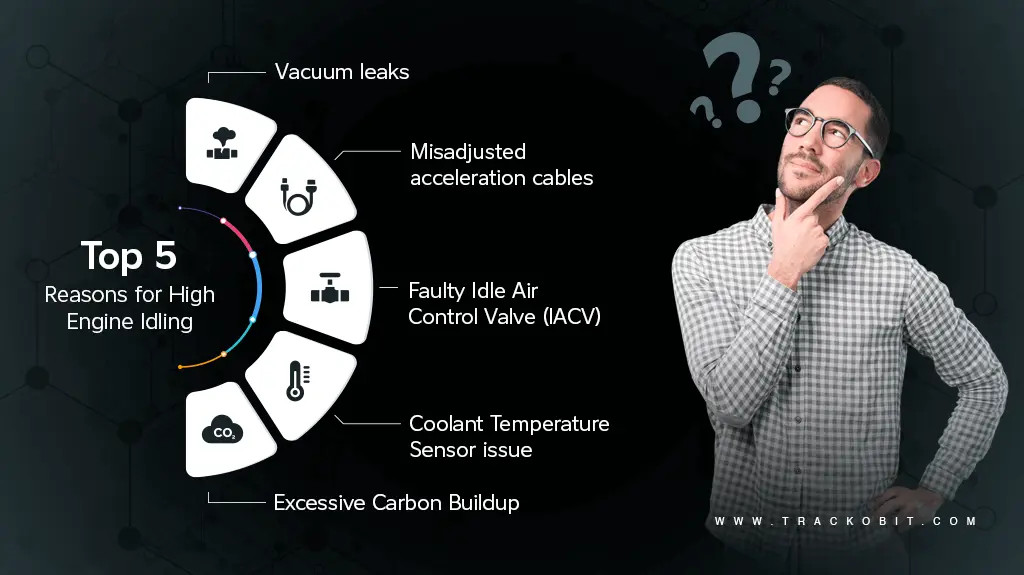How Long to Fix a Car: Collision Repair Times Explained

How long to fix a car after an accident? The answer varies, but CARDIAGTECH.NET is here to provide clarity. Understanding average repair times, stages of the process, and influencing factors will empower you to navigate auto body repairs with confidence. We offer solutions for your auto repair needs. With information on car repair duration, collision repair estimates, and auto body shop timelines, you’ll be well-prepared.
1. Average Car Repair Duration After a Collision
The question “How long to fix a car?” depends heavily on the specific circumstances. The average auto body repair time can range widely, from a few hours to several weeks, or even longer. This variance depends on the extent of the damage, the type of vehicle, and other factors. To better understand the potential timeline, let’s break down average repair times for different types of collision damage.
 Average Collision Repair Time
Average Collision Repair Time
The average collision repair time is influenced by various factors, including the severity of damage and parts availability.
Here’s a table outlining average repair times for different levels of damage:
| Type of Collision Repair | Average Time to Fix |
|---|---|
| Minor Collision Repair | 1-3 days |
| Major Collision Repair | 1 to 3 weeks |
| Paintless Dent Repair | 1-2 days |
| Bumper Repair/Replacement | 1-3 days |
| Fender Repair/Replacement | 1-4 days |
| Door Repair/Replacement | 2-4 days |
| Glass Replacement | 1-2 days |
| Suspension Repair | 2-3 days |
| Frame Straightening | 4 days – 2 weeks |
| Paint Repair (minor) | 2-4 days |
| Paint Repair (major) | 1-2 weeks |
| Airbag Replacement | 2-5 days |
| Engine Repair/Replacement | 1-4 weeks |
| Full Vehicle Restoration | 4-8 weeks or longer |
2. Minor vs. Major Car Repair Timeframes
2.1. Minor Collision Repair
Minor collision repairs usually take between 1 to 3 days. These repairs typically include simple fixes such as small dents, scratches, or minor bumper damage. Such repairs don’t affect the vehicle’s core structure, requiring only cosmetic adjustments. They are generally not labor-intensive, and with the right tools from CARDIAGTECH.NET and parts, the work can be completed efficiently.
Example Scenarios:
- Shopping Cart Collision: A small dent caused by a shopping cart.
 car with a dent from a shopping cart
car with a dent from a shopping cart
A shopping cart dent can typically be repaired within a few days.
- Tree Branch Scratches: Scratches on the car’s surface from tree branches.
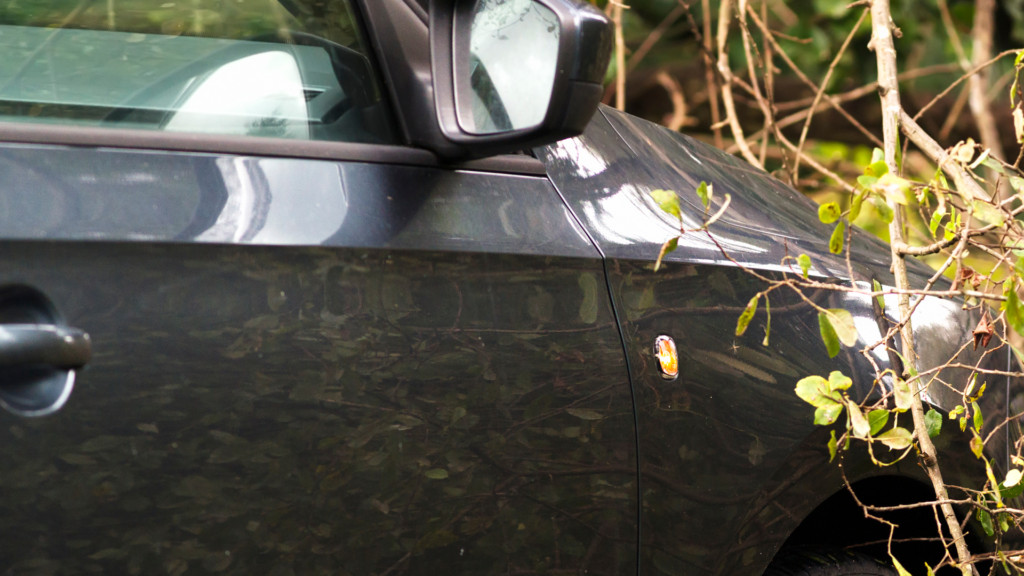 car with scratches from a tree branch
car with scratches from a tree branch
Surface scratches from tree branches usually require a short repair time.
- Minor Scratches from Road Debris: Small paint chips and scratches on the hood or bumper.
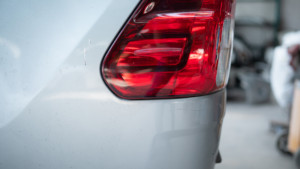 car with small paint chips and scratches on the hood or bumper
car with small paint chips and scratches on the hood or bumper
Road debris scratches are generally quick to repair.
2.2. Major Collision Repair
Major collision repairs can take anywhere from 1 to 3 weeks. These involve more complex issues like frame damage, mechanical problems, or airbag replacements. These repairs require specialized labor and may involve waiting for specific parts, extending the overall repair time.
Example Scenarios:
- Rear-End Collision: Damage to the rear of the vehicle, including a crushed trunk and a damaged bumper.
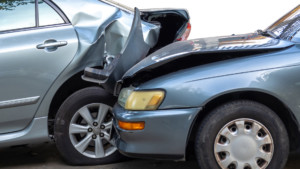 car with rear end damage, including a crushed trunk and a damaged bumper
car with rear end damage, including a crushed trunk and a damaged bumper
A rear-end collision often requires a longer repair period.
- Side-Impact (T-Bone) Collision: Damage to the side of the vehicle, including a crushed door and a damaged side panel.
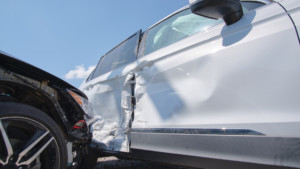 car with side impact damage, including a crushed door and a damaged side panel
car with side impact damage, including a crushed door and a damaged side panel
Side-impact collisions can take several weeks to repair.
- Parking Lot Collision with a Pole or Barrier: Front-end damage from hitting a pole or barrier, including a damaged bumper and a bent fender.
 car with frontend damage from hitting a pole or barrier, including a damaged bumper and a bent fender
car with frontend damage from hitting a pole or barrier, including a damaged bumper and a bent fender
Collisions with poles or barriers may result in moderate repair times.
2.3. Severe Collision Damage
In cases of very severe damage, such as extensive frame damage or when hard-to-find parts are needed, repairs can extend beyond 3 weeks. The more severe the damage, the longer the repair time.
Example Scenarios:
- High-Speed Head-On Collision: Severe front-end damage, including a crushed front end, crumpled hood, and broken windshield.
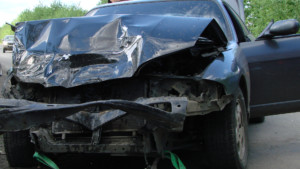 car with severe frontend damage, including a crushed front end, crumpled hood, and broken windshield
car with severe frontend damage, including a crushed front end, crumpled hood, and broken windshield
High-speed head-on collisions often lead to extended repair times.
- Rollover Accident: Extensive damage to the roof, sides, and possibly the undercarriage.
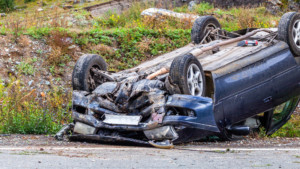 car that has rolled over, showing damage to the roof, sides, and possibly the undercarriage
car that has rolled over, showing damage to the roof, sides, and possibly the undercarriage
Rollover accidents typically require the longest repair durations.
- Severe Side-Impact (T-Bone) Collision at High Speed: Crushed door, damaged side panel, and potentially a damaged frame.
 car with severe side impact damage, including a crushed door, damaged side panel, and potentially a damaged frame
car with severe side impact damage, including a crushed door, damaged side panel, and potentially a damaged frame
Severe side-impact collisions at high speed can extend repair times significantly.
3. Stages of the Automotive Repair Process
To understand the timeframe, it’s helpful to understand the stages of the collision repair process, from the initial estimate to the completion of the vehicle.
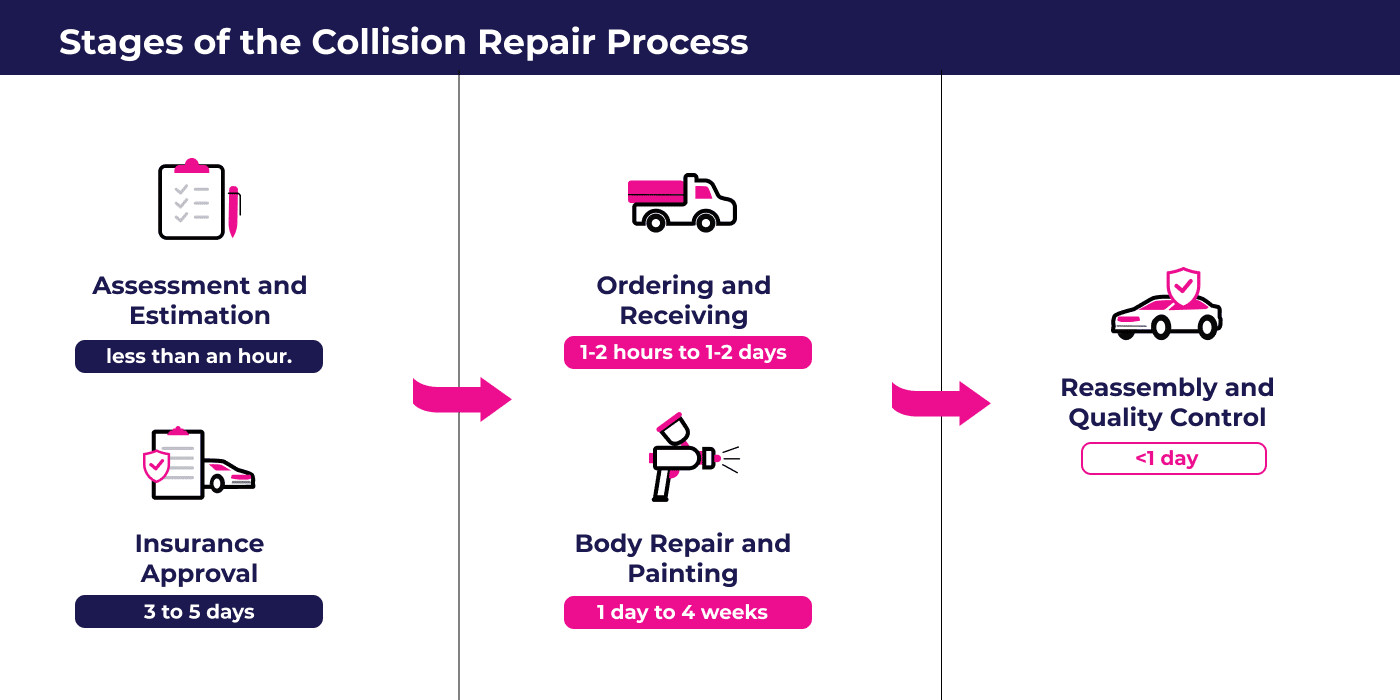 Stages of the Collision Repair Process
Stages of the Collision Repair Process
Understanding the stages of collision repair can help set realistic expectations.
3.1. Assessment and Estimation
The initial step of any collision repair service is the assessment and estimation phase. During this stage, a repair facility will examine the damage to your car. They will estimate the timeframe and cost of repairs, take necessary photos and paperwork, and then provide the repair estimate to you, the vehicle owner.
Timeframe: Many auto repair shops take several hours to a day or longer to provide an accurate estimate.
3.2. Insurance Approval
If you’re using an insurance policy for your collision repairs, they will need to review and approve the estimate. There may be some negotiating based on the required repairs, costs, and other information. The insurance company will determine if your vehicle is repairable and whether the cost of repairs is fair.
Timeframe: 3 to 5 days
3.3. Ordering and Receiving Parts (if needed)
Depending on the extent of damage, the make and model of the vehicle, and the damaged area, the collision repair shop may need to order replacement parts. The time it takes to receive parts can vary from a couple of hours to a few days or longer.
Timeframe: 1-2 hours to 1-2 days
3.4. Body Repair and Painting
The next stage of the collision repair process is the actual vehicle repair. This involves restoring the vehicle to factory specifications and ensuring that the car frame remains structurally sound. Technicians will remove dents, replace parts, and use premium paint to restore the aesthetic of your vehicle.
Timeframe: 1 day to 4 weeks, depending on damage and other factors.
3.5. Reassembly and Quality Control
During this step, any detail pieces and final moldings will be put back on the vehicle. Then, the vehicle will be washed, cleaned, and thoroughly inspected to ensure everything looks great. In addition, all vehicle systems are checked and tested for safety and performance.
Timeframe: Varies depending on the complexity, but typically a few hours to a day.
3.6. Additional Factors to Consider
In addition to the typical stages of collision repair, consider the possibility of hidden or additional damage that may be discovered during the repair process. Some vehicles may also require specialized repairs like frame straightening, wheel alignment, additional auto detailing, or other services that can extend the repair time. There is also a chance of supply chain issues, heavy mechanical workloads, and other potential situations that can lengthen wait time.
4. Factors Impacting Car Repair Duration
Several factors affect the answer to the question, “How long does it take to fix a car?” Key factors include the type of damage, availability of replacement parts, type of vehicle, insurance claims, and repair shop workload.
 Factors Affecting Collision Repair Time
Factors Affecting Collision Repair Time
Factors such as severity of damage and parts availability significantly affect collision repair time.
4.1. Severity of Damage
The cost and time for auto repairs depend significantly on the extent of the damage. Minor issues like dents or scratches are cheaper and quicker to fix, typically ranging from $150 to $2,000. Major repairs, such as bumper or frame damage, can cost up to $30,000. Minor repairs can take a few hours, while larger fixes may take days or weeks. Quick repairs, like buffing a scratch, can be done in about an hour with the right tools and expertise. CARDIAGTECH.NET provides tools to help with both minor and major repairs.
4.2. Availability of Replacement Parts
The availability of replacement parts affects both the cost and repair time. Common parts are usually less expensive, ranging from $100 to $3,000, and can be delivered quickly, allowing repairs to be completed in a few hours to a couple of days. However, rare or custom parts are more costly, sometimes exceeding $5,000, and can take several days or even weeks to arrive. This not only increases the overall repair cost but also extends the repair time, as work cannot begin until the parts are received. The repair timeline is also influenced by the availability of specific brands. OEM parts are often on backorder due to high demand or limited production, while aftermarket parts are generally more accessible but may not match OEM quality, potentially impacting durability. Choosing between OEM and aftermarket parts, along with backorder delays, can add complexity to repair costs and timing.
4.3. Type of Vehicle
The type of vehicle can significantly affect repair costs and timelines. Common vehicles include widely available brands like Toyota, Honda, Ford, and Chevrolet. These brands typically have readily available aftermarket and OEM parts, making repairs faster and more affordable, with costs generally ranging from $500 to $3,000 and taking only a few days. Luxury or rare vehicles such as Mercedes-Benz, BMW, Audi, Lexus, and Tesla require specialized parts and technicians trained in handling specific features or technologies. Repairs for these brands can be more expensive, often exceeding $5,000 and taking several weeks, especially if rare parts are needed. Newer vehicles across all brands may also have quicker and more cost-effective repairs due to better access to OEM parts and warranty coverage, which can reduce both time and costs involved.
4.4. Insurance Company Involvement
When insurance is involved in collision repair, it often adds time due to claim filing and approval. Minor repairs, usually under $1,000, are often quicker and cheaper to handle out-of-pocket. For larger repairs, costs can range from $1,500 to $5,000 or more. Insurance claims can extend repair time from days to weeks.
4.5. Repair Shop Workload
The workload of an auto repair shop can significantly affect how long it takes to get your vehicle repaired. If the shop is busy, you may experience delays. Choosing a reputable collision repair shop is crucial because they provide quality work, fair pricing, and transparency without hidden fees. Many also offer services like insurance assistance and financing. On average, collision repairs can cost between $1,500 to $5,000, and the repair time can range from a few days to a couple of weeks, depending on the shop’s workload and the complexity of the repair.
5. The Importance of Proper Auto Repair Tools
Using high-quality tools significantly reduces the time it takes to fix a car. With advanced diagnostic tools from CARDIAGTECH.NET, technicians can quickly identify issues, order the correct parts, and perform repairs efficiently. This reduces overall repair time, improves accuracy, and minimizes errors.
Here’s a comparison of how advanced tools from CARDIAGTECH.NET can reduce repair times:
| Repair Task | Traditional Tools | CARDIAGTECH.NET Tools | Time Saved |
|---|---|---|---|
| Diagnostics | 2-3 hours | 30-60 minutes | 1-2 hours |
| Dent Removal | 1-2 days | 4-8 hours | 0.5-1 day |
| Painting | 3-4 days | 1-2 days | 1-2 days |
| Part Replacement | 1-2 days | 4-8 hours | 0.5-1 day |
6. Choosing CARDIAGTECH.NET for Your Auto Repair Needs
For efficient and precise auto repairs, selecting the right tools is crucial. CARDIAGTECH.NET offers a wide array of auto repair tools designed to streamline the repair process. Here are a few of the tools offered:
- Diagnostic Scanners: Quickly identify issues and reduce diagnostic time.
- Dent Removal Kits: Efficiently remove dents without damaging the vehicle’s paint.
- Paint Matching Systems: Ensure perfect color matching, reducing the need for rework.
- Lifting Equipment: Safely lift vehicles for undercarriage repairs.
- Welding Machines: Perform precise and durable welds.
7. Benefits of Purchasing Tools from CARDIAGTECH.NET
Investing in tools from CARDIAGTECH.NET offers numerous advantages:
- Increased Efficiency: Advanced tools allow quicker diagnoses and repairs, reducing overall repair time.
- Improved Accuracy: Precise tools minimize errors, ensuring high-quality repairs.
- Enhanced Safety: Reliable equipment ensures a safe working environment.
- Cost Savings: Reduced repair times and fewer errors lead to lower labor costs and material waste.
8. Real-World Examples of Time Savings with CARDIAGTECH.NET
Consider a scenario where a vehicle requires dent removal and repainting. Using traditional methods, the process might take up to five days. However, with CARDIAGTECH.NET’s dent removal kits and paint matching systems, the same repair can be completed in just two days, significantly reducing downtime and costs.
9. How CARDIAGTECH.NET Addresses Customer Challenges
CARDIAGTECH.NET understands the challenges faced by auto repair professionals. Our tools are designed to address these challenges head-on:
- Physical Demands: Ergonomic tools reduce strain and fatigue, improving overall comfort and productivity.
- Keeping Up with Technology: Regular updates and training ensure you stay current with the latest automotive technologies.
- Time Constraints: Efficient tools help you manage your workload and meet deadlines.
- Competition: High-quality tools enable you to offer superior service, setting you apart from competitors.
- Finding Quality Tools: CARDIAGTECH.NET provides reliable and durable tools that meet the demands of professional use.
10. Actionable Steps to Reduce Car Repair Time
To minimize the time it takes to fix a car, consider these actionable steps:
- Invest in advanced diagnostic tools from CARDIAGTECH.NET to quickly identify issues.
- Maintain a well-organized shop to easily locate tools and parts.
- Implement a streamlined workflow to optimize the repair process.
- Continuously train your technicians to enhance their skills and efficiency.
- Establish strong relationships with parts suppliers to ensure timely delivery of replacement parts.
11. Call to Action: Contact CARDIAGTECH.NET for Expert Advice
Are you looking to improve the efficiency of your auto repair shop? Do you need assistance in selecting the right tools for your specific needs? Contact CARDIAGTECH.NET today for expert advice and support.
Address: 276 Reock St, City of Orange, NJ 07050, United States
WhatsApp: +1 (641) 206-8880
Website: CARDIAGTECH.NET
Our team of experts is ready to help you find the perfect tools and equipment to streamline your repair process, reduce repair times, and enhance the overall quality of your service. Don’t let outdated tools hold you back. Invest in CARDIAGTECH.NET and experience the difference.
12. Conclusion
While the answer to “How long does a collision repair take?” can vary from a day or less to several weeks, understanding the factors that influence repair time can help manage expectations. From the severity of damage and type of vehicle to insurance involvement and repair shop workload, these elements play a crucial role in determining the overall timeline. By choosing a reputable auto repair service and utilizing advanced tools, you can ensure a smooth, fast, and reliable collision repair process. And remember, for top-quality tools that enhance efficiency and accuracy, CARDIAGTECH.NET is your trusted partner.
13. Average Car Repair Duration FAQs
13.1. What are my transportation options while my car is in the shop?
Finding transportation while your vehicle is undergoing collision repair can be a hassle. In some cases, your insurance provider may cover a rental car. Check your policy details or contact your insurance company to explore this option. Alternatively, some repair shops offer loaner vehicles or shuttle services.
13.2. Do you offer an automotive repair warranty?
Reputable auto body shops typically offer warranties on their work. These warranties cover defects in materials and workmanship, providing peace of mind. Be sure to inquire about the warranty terms and conditions before authorizing any repairs. CARDIAGTECH.NET ensures that the tools used meet the highest standards for quality repairs.
13.3. How long does it take to fix a front-end collision vs. a rear-end collision?
The repair time for front-end and rear-end collisions can vary. Front-end repairs often take longer due to the complexity of the engine, radiator, and other components. Rear-end repairs are generally quicker and less expensive.
13.4. When is my car considered a total loss?
A car is typically considered a total loss when the cost of repairs exceeds the car’s value or a certain percentage (usually around 70-75%) of its value. The insurance company will assess the damage and determine whether it’s more cost-effective to repair the vehicle or declare it a total loss.
13.5. What should I do if the repair is taking much longer than originally estimated?
If the repair is taking significantly longer than estimated, communicate with the auto body shop. Discuss the reasons for the delay and request regular updates. If you’re not satisfied with the explanation, consider contacting your insurance company to explore other options.
13.6. How much does collision repair cost?
Collision repair costs can vary significantly based on several factors. That’s why it’s essential to obtain a detailed estimate from a reputable auto body shop. The estimate should include a breakdown of all costs, including parts, labor, and any additional services.
13.7. How can CARDIAGTECH.NET help speed up the repair process?
CARDIAGTECH.NET offers a range of advanced diagnostic and repair tools that help technicians quickly identify and address issues. Our tools improve efficiency, accuracy, and overall repair quality, resulting in faster turnaround times.
13.8. What types of diagnostic tools does CARDIAGTECH.NET offer?
CARDIAGTECH.NET offers a variety of diagnostic tools, including OBD-II scanners, code readers, and advanced diagnostic systems. These tools provide comprehensive diagnostics for various vehicle makes and models, helping technicians quickly pinpoint problems and recommend appropriate solutions.
13.9. Are CARDIAGTECH.NET tools suitable for both minor and major repairs?
Yes, CARDIAGTECH.NET tools are designed to handle both minor and major repairs. From dent removal kits to welding machines, our tools provide the versatility and reliability needed to tackle any repair job.
13.10. How can I learn more about the tools offered by CARDIAGTECH.NET?
Visit our website at CARDIAGTECH.NET to explore our full range of auto repair tools and equipment. Contact our team of experts for personalized assistance and guidance. We are here to help you find the perfect tools to enhance your auto repair capabilities.





